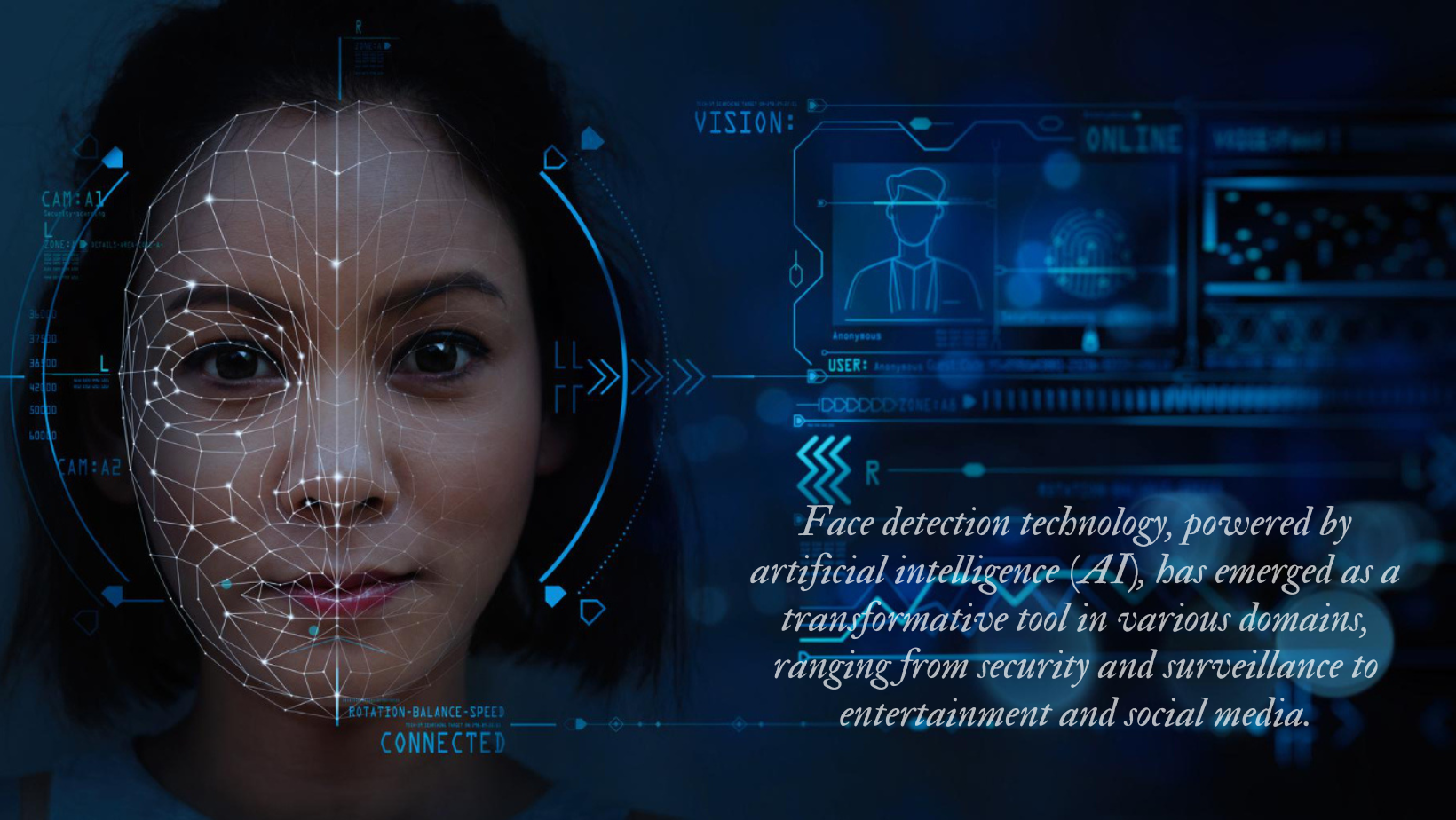THE EVOLUTION AND THE IMPACT OF FACE DETECTION TECHNOLOGY

Introduction
In today's rapidly advancing technological landscape, face detection technology has emerged as a game-changing innovation with profound implications for a wide range of industries. From enhancing security systems to revolutionizing marketing and entertainment, this technology has evolved significantly and continues to shape the way we interact with the digital world.
The Early Days of Face Detection
Inception: Face detection technology can
be traced back to the 1960s when researchers began exploring computer-based
pattern recognition. Early systems used simple geometric models to identify
facial features.
The Viola-Jones Algorithm: In 2001, Viola and Jones introduced a pivotal face detection algorithm based on Haar-like features and a cascading structure. This marked a significant breakthrough, making real-time face detection possible.
Applications in Security and
Surveillance
CCTV Systems: Face detection is now a cornerstone of closed-circuit television (CCTV) systems, significantly improving security and surveillance capabilities.
Biometric Authentication: It is used for facial recognition in biometric security applications, such as unlocking smartphones and securing access to high-security areas.
Face Detection in Consumer Electronics
Smartphones: The technology has become mainstream with smartphones using face detection for unlocking devices and enhancing user experiences.
Digital Cameras: Face detection enhances the quality of photographs by automatically focusing on human faces.
Marketing and E-commerce
Personalized Marketing: Retailers and marketers use face detection to gather data on customer demographics and emotions, enabling personalized advertising and product recommendations.
Virtual Try-Ons: E-commerce platforms employ face detection to allow customers to virtually try on products like cosmetics, eyeglasses, and clothing.
Entertainment and Gaming
Emotion Recognition: In the gaming industry, face detection is used for emotion recognition, enabling games to adapt to players' facial expressions and reactions.
Character Animation: Animators use face detection to capture real-time facial expressions for lifelike character animation in movies and video games.
Challenges and Concerns
Privacy Concerns: The increasing prevalence of face detection technology raises concerns about privacy and the potential misuse of personal data.
Bias and Accuracy: The accuracy of face detection algorithms can be affected by bias, especially when it comes to gender and ethnicity. This raises ethical issues that need to be addressed.
Recent Advancements in Face Detection
Deep Learning: Deep learning techniques, especially convolutional neural networks (CNNs), have revolutionized face detection, making it more accurate and efficient.
Real-time Processing: Advancements in hardware and algorithms have made real-time face detection possible, even on low-power devices.
The Impact of Face Detection in Healthcare
Medical Diagnostics: Face detection is being used in telemedicine for remote patient monitoring and for diagnosing medical conditions based on facial symptoms.
Mental Health: It aids in identifying signs of mental health issues by analyzing facial expressions and emotions.
Future Trends in Face Detection Technology
Enhanced Accuracy: Ongoing research focuses on improving the accuracy and robustness of face detection algorithms, addressing biases, and increasing performance.
Integration with AR/VR: Face detection is set to play a pivotal role in augmented reality (AR) and virtual reality (VR) applications, enhancing immersive experiences.
Multi-Modal Recognition: Combining face detection with other biometric data, such as fingerprint and voice recognition, will bolster security and authentication.
Conclusion :
Face detection technology has evolved from its early days of simple geometric models to become a transformative force in various industries. Its impact is felt in security, consumer electronics, marketing, entertainment, and healthcare, with ongoing advancements promising a future of increased accuracy and integration with emerging technologies like AR and VR. However, the ethical and privacy concerns associated with this technology underscore the need for responsible development and usage in the years to come. As technology continues to evolve, the possibilities are endless, and its influence on our daily lives is bound to expand even further.

